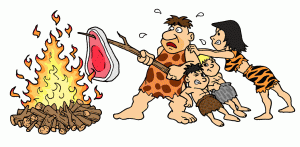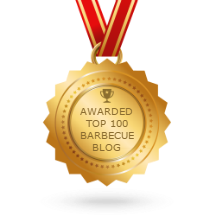Safe Grilling Tips for 2011
It's a new year and that means freshing up on some basics of grilling safety. Every year hundreds if not thousands of people are injured because of careless grilling habits. I thought I would share with you some grilling safety tips from my friends over at the Hearth, Patio & Barbecue Association and a couple of videos from the National Fire Protection Association:
TIPS FOR SAFE BARBECUING
Consumers’ love affair with barbecuing continues unabated, and for good reasons. They tell us they barbecue mainly because the food tastes good, but they cite other reasons too: it’s fun, it keeps the kitchen cool, it’s a great way to entertain at home… the list goes on.
Following a few basic steps can help ensure safe, reliable operation of your outdoor cooking appliance, regardless of what type you use.
RECIPE FOR SAFETY:
FIRST, BE SMART AND INFORMED
The main “ingredient” for safety in outdoor cooking is common sense. Read and follow the manufacturer’s instructions for assembling and using your grill or smoker, and call their “help line” numbers if you have a problem or a question.
BASIC SAFETY TIPS
- Use your barbecue grill outdoors, in an open area away from any enclosure or overhang – carbon monoxide can accumulate and cause fatalities
- Be sure all parts of your grill are firmly in place and that the grill is stable If you use electrically-powered accessories (e.g., a rotisserie) be sure they are properly grounded in accordance with local codes. Buy a cord designed for outdoor use. Route the cord well away from the hot grill and away from walkways
- Use long-handled utensils to avoid burns and spatters
- Do not wear anything with hanging shirttails, frills or apron strings
- Use flame-retardant mitts when adjusting hot vents
- To extinguish flare-ups, spread out the coals with a long-handled utensil (if you can reach them easily), or adjust the controls to reduce the temperature. If you must douse the flames with sprits of water, first remove the food from the grill.
- Always use an elbow-length, flame retardant mitt when dealing with flare-ups
- Use baking soda to control a grease fire and have a fire extinguisher handy. If you do not have a commercial extinguisher, keep a bucket of sand or a garden hose nearby
- Never leave a hot grill unattended
- Do not allow any activities around the grill when it is in use or still hot. Always use the grill away from combustible surfaces, and never attempt to move a hot grill
- Prior to lighting a gas grill, be sure to open the lid to prevent a buildup of gas
- When cooking is completed, be sure to turn off the fuel supply and then turn the burners to “off”
- Check your grill regularly for signs of wear and tear, particularly for hose cracks and possible leaks; also keep burners clear of dirt and insects that can block hoses or venturi tubes
- If you have an LP gas grill, always store your propane tanks outside and in an upright position
- Never use an LP cylinder if it shows signs of dents, gouges, bulges, fire damage, corrosion, leakage, excessive rust or other forms of visual external damage. It may be hazardous and should be checked by a liquid propane supplier
For more consumer safety information about liquid propane, visit www.usepropane.com The Hearth, Patio & Barbecue Association (HPBA) offers these suggestions for general grilling safety. More information – with detailed sections on safety tips for gas, charcoal/wood chunk and electric grilling, as well as Food Safety Tips for Barbecuing – is available under the Consumer link on the home page of our web site (http://www.hpba.org/).

